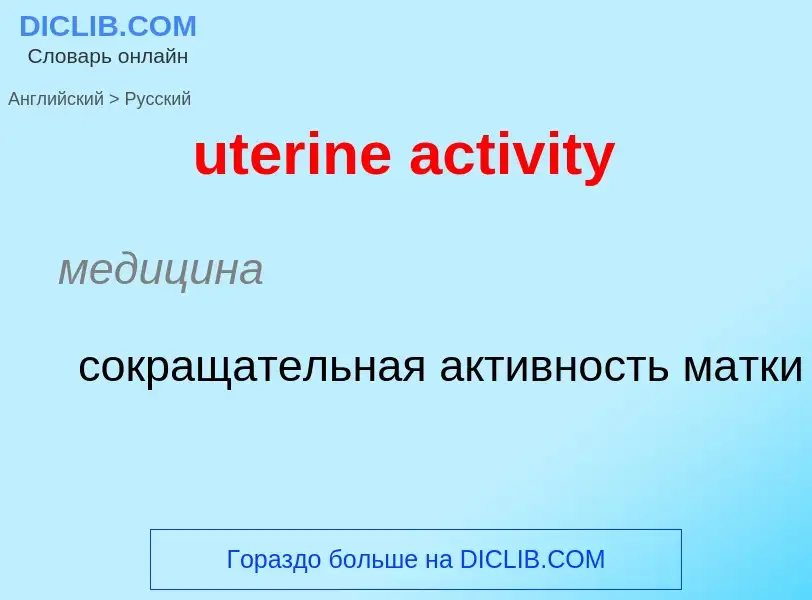Translation and analysis of words by ChatGPT artificial intelligence
On this page you can get a detailed analysis of a word or phrase, produced by the best artificial intelligence technology to date:
- how the word is used
- frequency of use
- it is used more often in oral or written speech
- word translation options
- usage examples (several phrases with translation)
- etymology
uterine activity - translation to russian
медицина
сокращательная активность матки
[æk'tiviti]
общая лексика
активность
деятельность
жизнедеятельность
вещество
обладающее какой-л. активностью
деятельность, действие
действенность
работа
радиоактивность
строительное дело
работа (в сетевом планировании)
существительное
общая лексика
деятельность
активность
оживление
интенсивность
энергия
активно действующая сила
часто
действия (в определённой области)
показатели (в экономических исследованиях)
экономика
часто деятельность
действия (функции, которые выполняются или должны быть выполнены кем-либо)
экономическая активность
хозяйственная деятельность
самодеятельность (населения)
бухгалтерский учет
операция
работа
вид деятельности (действие, рассматриваемое в качестве самостоятельной единицы при анализе, планировании, учете и т. п., напр., торговые операции как отдельный вид операций, выделенный для упрощения бухгалтерского учета)
военное дело
боевые действия локального характера
американизм
инстанция
орган
учреждение
физика
радиоактивность
синоним
антоним
Definition
Wikipedia
The uterine horns (cornua of uterus) are the points in the upper uterus where the fallopian tubes exit to meet the ovaries. They are one of the points of attachment for the round ligament of uterus (the other being the mons pubis). They also provide attachment to the ovarian ligament, which is located below the fallopian tube at the back; while the round ligament of uterus is located below the tube at the front.
The uterine horns are far more prominent in other animals (such as cows and cats) than they are in humans. In the cat, implantation of the embryo occurs in one of the two uterine horns, not the body of the uterus itself.
Occasionally, if a fallopian tube does not connect, the uterine horn will fill with blood each month, and a minor one-day surgery will be performed to remove it. Often, people who are born with this have trouble getting pregnant as both ovaries are functional and either may ovulate. The spare egg, that cannot travel the fallopian tube, is absorbed into the body.

